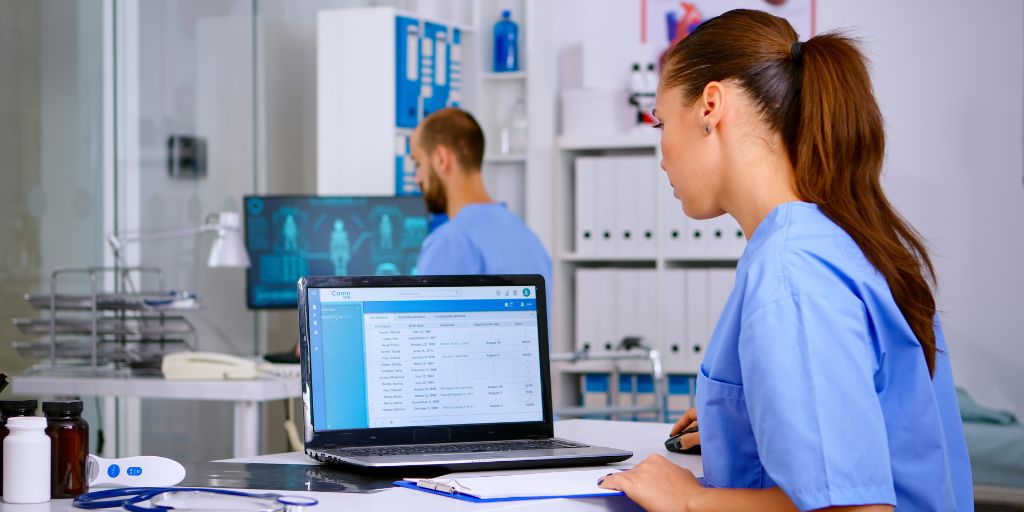
The use of electronic health records (EHR) is widespread across Europe as healthcare providers look to connect services and create better outcomes for patients. And while each nation is progressing at its own pace, what unites them all is a clear focus on a people-centred approach to digital health.
These are just some of the insights discussed in a 134-page report published by the World Health Organization (WHO) last year into the current state of digital healthcare in Europe. The report—The ongoing journey to commitment and transformation: Digital health in the WHO European Region 2023—provides a detailed examination of digital health services in more than 50 countries, including analysis of how EHRs have become a pivotal part of modern healthcare systems.
That includes discussing critical issues such as data governance, data ownership and sharing, accessibility and privacy, as well as regulation and compliance—all of which are essential to patient outcomes. But for me, one of the most important parts of any healthcare solution is the technology that underpins it. Without secure, reliable databases, such nation-scale innovations simply would not be possible.
Here are my three reasons why robust databases are indispensable to modern healthcare:
Reason #1: Secure databases help healthcare providers meet regulatory requirements for patient data.
The legal framework for modern, digitally connected healthcare systems includes detailed and rigorous requirements for protecting patient data. Compliance with such regulations—which can vary from country to country—is not just a legal obligation. It’s a fundamental part of protecting patient privacy.
As such, secure databases play a pivotal role in compliance by safeguarding patient data at the source. IT monitoring tools, designed to align with the very latest
cybersecurity regulations, help guard against security breaches. Used as part of a system’s larger database solution, these tools can detect and respond to potential
threats and performance degradations in real time, providing an additional layer of protection for patients and their data.
By maintaining accurate and consistent records, healthcare providers can meet or exceed regulatory requirements while also building trust with health care providers, patients, and other stakeholders. In the event of a data breach or other security incident, a reliable database can provide a clear audit trail which can be used to identify the source of a problem and address it.
Reason #2: Highly accessible and reliable databases support disparate hospital systems.
According to WHO, 87% of member states that make up its European region reported having either a national EHR system (NEHR), interconnected regional EHRs, or a patient portal. It also found that 82% of Member States routinely make prescriptions electronically available to pharmacies.
This level of data sharing can only be done if there is a reliable database system that allows instant access to patient records within a secure network. Managing such
databases presents significant challenges, particularly in areas such as data consistency and synchronisation. Getting this wrong across connected yet disparate systems can lead to fragmented, incomplete, or unreliable patient data, which can make it difficult to provide a unified view of a patient's medical history or even lead to lower quality decisions by health care providers and patients.
The best health care databases offer a single source of reliable and timely data through a single data visualisation, even when the underlying data is derived from many locations or information systems. And the importance of this cannot be underestimated. Not only can seamless access to patient data help to improve the quality of care, it also reduces the risk of medical errors while enhancing overall operational efficiency. Highly accessible, reliable databases are crucial for successful interoperability between locations within distributed systems and are essential for any organisation that is looking to scale.
Reason #3: Databases ensure uninterrupted access to patient data and electronic health records.
Clinicians need access to EHRs 24/7—in real-time, with the most up-to-date information available. But that can only happen if the databases underpinning EHRs are functioning properly. Traditionally, databases are black boxes that are difficult to access, administrate, and optimise. Thankfully, modern database observability solutions address this problem, allowing IT staff to see what’s going on inside of the system in case of any issues or bugs, then quickly resolve them.
While observability solutions help to maintain database performance, further protocols and safeguards are essential to provide an additional layer of recoverability and availability. As a baseline, important databases must be protected by regular backup procedures and disaster recovery plans, both of which are essential to minimise downtime and data loss. Further safeguards, such as highly redundant databases and servers synchronised across geographically disparate data centres, ensure that critical healthcare data is preserved even in the event of a wide-scale natural disaster. This is critical should a database server fail, enabling hospitals and other medical centres to act quickly to ensure that patient data remains accessible.
EHRs are an integral part of modern healthcare. They are the public face of successful digital transformation initiatives within healthcare that put’s patients front and centre. However, such systems are only possible because of the databases working behind the scenes that ensure uninterrupted access to patient clinical information, as well as data privacy and regulatory compliance. That puts databases at the heart of digital transformation in healthcare today and for decades to come.



